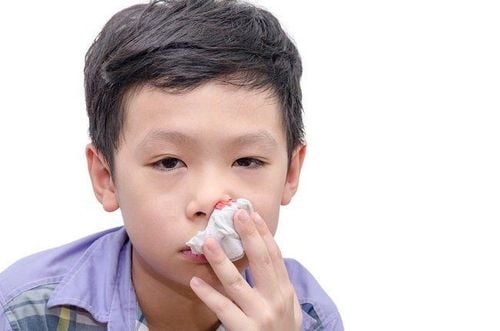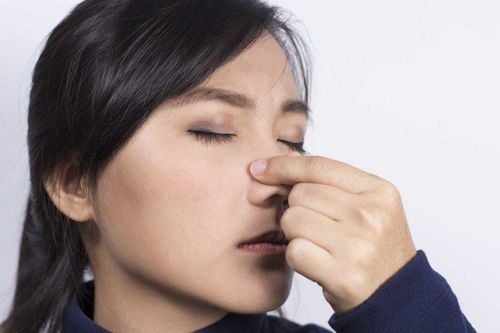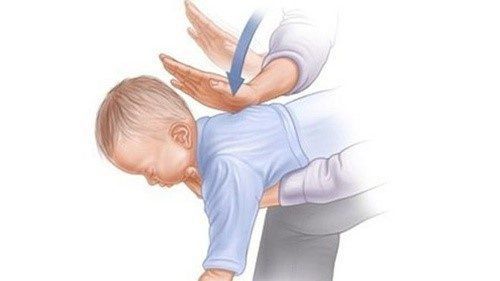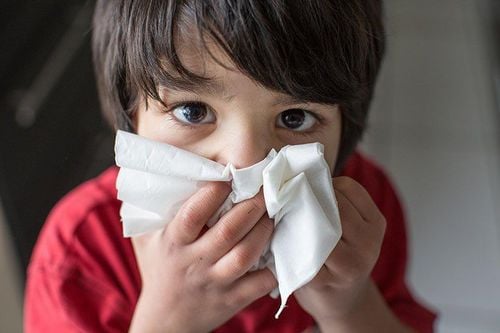This is an automatically translated article.
The article is professionally consulted by Master, Doctor Vu Huu Thang - Emergency Resuscitation Doctor - Emergency Resuscitation Department - Vinmec Ha Long International HospitalChoking occurs when a foreign object is in the throat or windpipe, blocking the flow of air. In adults, the culprit for choking can be a piece of food, in children it is often caused by swallowing a small object. Choking cuts off oxygen to the brain, so give first aid to the victim as quickly as possible.
1. Signs of suffocation
A common sign of choking is a clenched fist in the throat. If the person has no obvious symptoms, look for the following possible signs:Inability to talk Difficulty breathing or noisy breathing Annoying cries when trying to breathe Cough, which can be weak or strong Skin, lips and nails turn blue or dark Skin becomes red, then turns pale or bluish Loss of consciousness
2. First aid in case of emergency choking
If the person is able to cough vigorously, the person should continue coughing. If the person is choking and cannot speak, cry, or laugh forcefully, the American Red Cross recommends a "five and five" approach to providing first aid:5 back pats: For adults, stand to the side and right behind. For a child, kneel behind. Place one arm across the person's chest for support. Bend at the waist so that your upper body is parallel to the ground. Deliver five separate backstrokes between the person's shoulder blades with the heels of your hands. 5 Abdominal Presses: Perform five abdominal compressions (also known as the Heimlich maneuver). Repeat the above movements: 5 back pats, 5 abdominal thrusts until the blockage is dislodged. The American Heart Association does not teach back patting, only abdominal compressions. Do not use the back slap technique if you have not learned the technique. Both approaches are acceptable.

To perform abdominal thrusts (Heimlich maneuvers) on another person:
Stand behind the casualty, placing one foot slightly in front of the other for balance. Wrap your arms around the waist. Push your body forward slightly. If the child is choking, kneel behind the child. Grasp one hand and place it slightly above the victim's navel with the other hand firmly on the fist. Press hard and fast into your abdomen with a quick, upward thrust as if trying to lift yourself up. Do six to 10 abdominal compressions until the blockage is reached. If the blockage still doesn't come off, you can repeat the 5-5 cycle. If you are the only rescuer, perform back pats and abdominal thrusts before calling 911 or your local emergency number for help. If someone else is available, have that person call for help while you perform first aid.
If patient is unconscious, perform standard cardiopulmonary resuscitation (CPR) with chest compressions.
To perform abdominal thrusts (Heimlich maneuvers) on yourself:
First, if you are alone and choking, call your local emergency number immediately. Then, even though you won't be able to effectively perform back patting on yourself, you can still perform abdominal thrusts to dislodge the choking object.
Place a fist slightly above your navel. Grip your fist with the other hand and bend over a hard surface - a table or chair. Push your fists inward and upward.
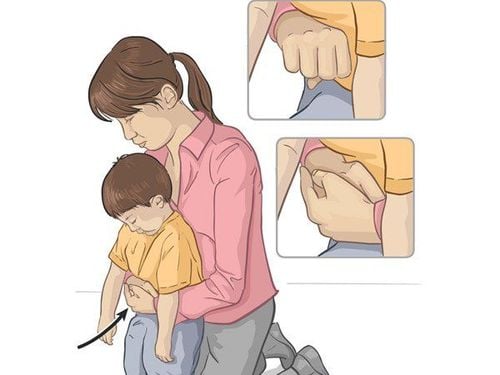
To clear the airways of a pregnant woman or an obese person :
Place your hand slightly higher than the normal Heimlich maneuver - at the base of the sternum, or where the lowest ribs are attached. . Proceed as with the Heimlich maneuver, pressing firmly into the chest, with a quick thrust. Repeat until the food or obstruction is dislodged. If the person is unconscious, follow the next steps of CPR. To clear an unconscious person's airway:
Lower yourself onto the floor, placing your hands to the side. Clearing the airways: If the obstruction is visible in the back of the throat or high up in the throat, insert a finger into the mouth and remove the foreign body. Don't try pressing your finger in if you can't see the object. Be careful not to push food or objects deeper into the airways, which is more likely to happen in young children. Start CPR- CPR if the foreign body is still obstructed and the victim is unresponsive after you take the above measures. Chest compressions used in CPR can dislodge the foreign body. Remember to check your mouth periodically. To clear the airway of a choking infant, younger than 1 year:
Hold infant face down on forearm, hand resting on your lap. Support to support baby's head and neck with hands. Give five gentle pats five times to the center of the baby's back with the heel of your other hand. The combination of gravity and back-slapping will likely cause the foreign body to dislodge. Keep your fingers pointed upwards to avoid hitting the infant in the back of the head. Keep the baby on his or her back on your forearm and head lower than the body if that doesn't work. Place two fingers in the center of the baby's breastbone and apply pressure to the chest 5 times. Repeat back patting and chest compressions if breathing has not yet recovered. Call for emergency medical help. Begin CPR on the infant if one of the techniques above has cleared the airway but the infant is not breathing. If the child is older than 1 year and is conscious, only abdominal compressions should be performed. Be careful not to use too much force to avoid damaging the child's ribs or internal organs. To prepare for these situations, learn how to perform Heimlich and CPR in a certified first aid training course.
Please dial HOTLINE for more information or register for an appointment HERE. Download MyVinmec app to make appointments faster and to manage your bookings easily.
Reference source: Mayoclinic.org





